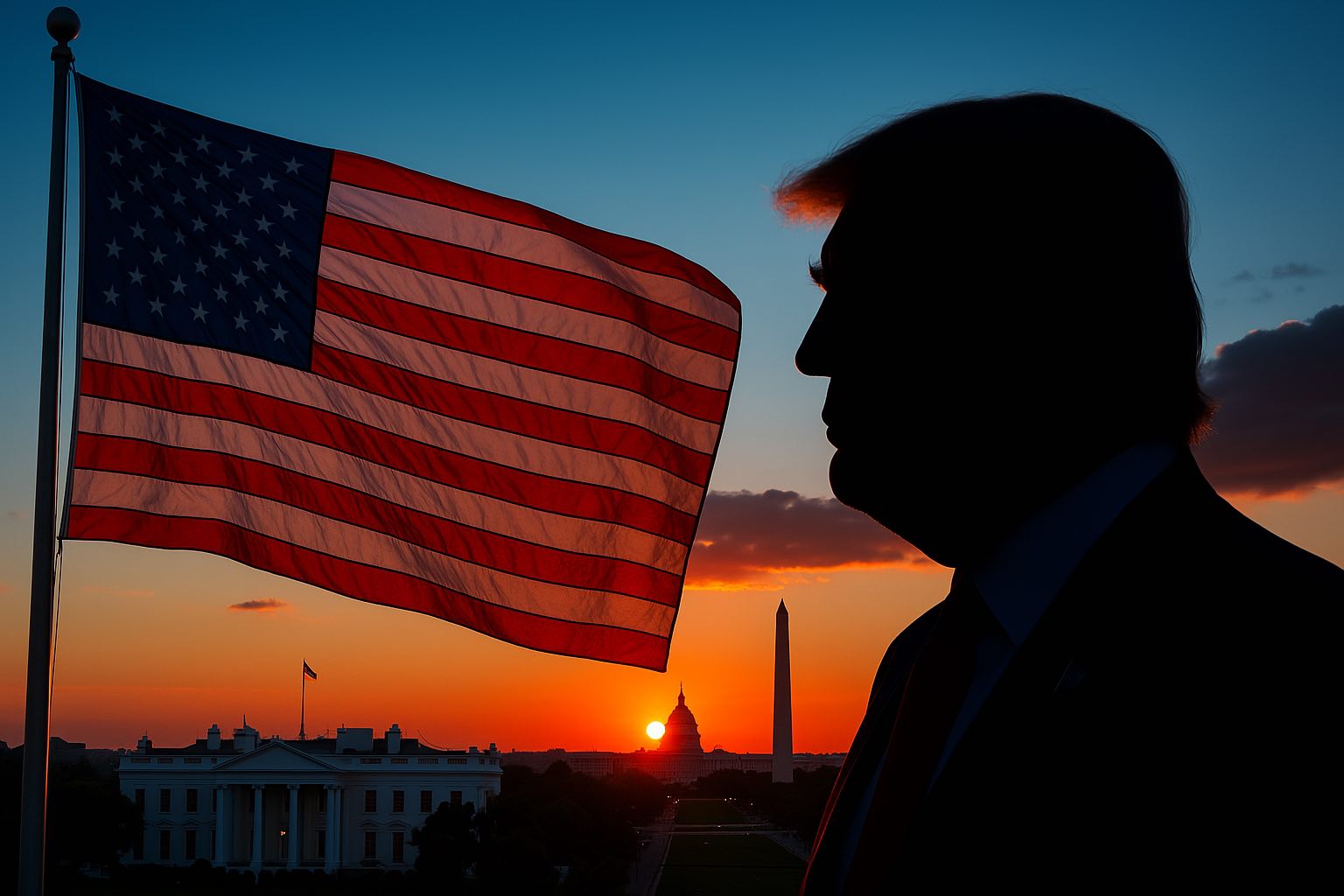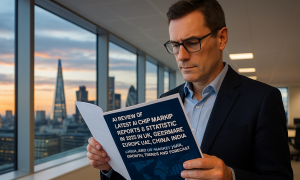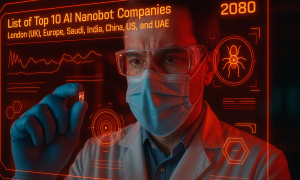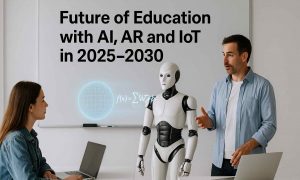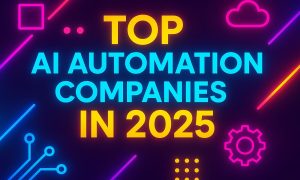

Introduction
In 2025, the global economy is experiencing significant structural shifts influenced by the intersection of geopolitical decisions and technological advancements. Central among these are tariffs, Artificial Intelligence, automation, and Robotics. These forces have reshaped how goods are produced, moved, and consumed across borders. Their impact is particularly pronounced in the United States (US), United Kingdom (UK), Europe, United Arab Emirates (UAE), Saudi Arabia, and Asia, where governments and corporations are adapting to maintain economic resilience and competitive advantage.

Tariffs and Protectionism: Disrupting Global Trade
Tariffs are once again at the center of trade debates in 2025. The United States, under renewed protectionist policies, has imposed import tariffs ranging from 10% to 50% on goods from China, the European Union, and other trading partners (AP News). This move has reverberated across global markets, destabilizing supply chains that had only just recovered from COVID-19-era disruptions. For example, companies like Apple and Nvidia saw significant stock drops due to their dependency on foreign-made components (The Guardian).
The EU and China responded with retaliatory tariffs, leading to a global tit-for-tat scenario that has made international trade costlier and more unpredictable (Reuters). Companies across the UK and Europe are now reevaluating their reliance on long, cost-efficient supply chains and are moving toward more regional sourcing strategies, driven in part by advanced Artificial Intelligence analytics that optimize cost-benefit trade-offs in sourcing decisions.

The Role of AI in Modern Supply Chains
Artificial Intelligence has emerged as a cornerstone technology in navigating the complexity of modern supply chains. Its role is particularly evident in the predictive analytics tools that many companies have adopted to forecast demand, assess risk, and automate decision-making. In the UK, the adoption of AI in logistics is being spearheaded by firms like Ocado, which uses machine learning for dynamic route optimization and real-time inventory tracking (TechInformed).
Across Europe and Asia, AI-driven supply chain solutions are enabling just-in-time delivery models that minimize waste and reduce carbon emissions, aligning with broader ESG goals. According to The Business Research Company, the AI logistics and supply chain market is projected to reach $5.75 billion in 2025, growing at a CAGR of 42.6%.

Automation and Manufacturing Resilience
With rising tariffs increasing the cost of imported goods, companies are turning to automation to maintain margins. In the US, firms are localizing production and integrating automation to offset labor costs. Industrial automation is gaining momentum with support from federal initiatives to bring manufacturing back onshore. Tesla, for example, has accelerated investments in AI-enabled robotic arms and automated quality control systems to boost domestic production capacity.
In the UAE and Saudi Arabia, government-led visions like UAE’s “Operation 300bn” and Saudi Arabia’s Vision 2030 are pouring billions into domestic industrial capability, with automation and Artificial Intelligence as foundational elements. These technologies enable precision manufacturing and reduce dependency on foreign labor, an essential shift in the post-pandemic labor-scarce environment (The National News).

Robotics: Warehousing and Beyond
The rapid deployment of Robotics is revolutionizing warehousing and logistics. Companies like Honeywell are introducing AI-integrated robots to automate picking, packing, and palletizing. These systems are not only faster but also more accurate than their human counterparts, reducing error rates and increasing throughput.
In Asia, where e-commerce continues to surge, firms like JD.com and Alibaba have implemented fully automated warehouses where Robotics systems operate 24/7. Japan’s aging population has also made robotics a necessity rather than a luxury, transforming industries beyond logistics, including manufacturing and Healthcare.

AI-Driven Trade Strategy and Economic Adaptation
Governments are increasingly turning to Artificial Intelligence to forecast macroeconomic outcomes and simulate the impact of tariffs and trade sanctions. For instance, the UK Treasury employs machine learning models to simulate various Brexit and post-Brexit trade scenarios to mitigate economic risk. Similarly, Singapore’s Smart Nation initiative integrates AI into national trade systems to automate customs and enhance trade facilitation (Gov.sg).
This macro-level use of AI is creating a more responsive global trade environment, where decisions are informed by real-time data and predictive analytics. Combined with automation and Robotics, this approach is fostering economic resilience and agility, particularly in volatile regions.

Tariffs as a Catalyst for Digital Transformation
While tariffs initially disrupt, they also serve as a catalyst for innovation. In 2025, the increased cost of global trade is pushing companies to double down on digital transformation. For example, blockchain-enabled supply chain traceability is being combined with AI analytics to provide end-to-end visibility and accountability.
Siemens, for instance, offers smart factory solutions where digital twins powered by Artificial Intelligence simulate production scenarios, helping firms adapt to shifting trade regulations without pausing production. In Healthcare, companies are using AI to forecast PPE and vaccine supply needs, avoiding the critical shortages seen during the COVID-19 crisis (Digital Health Congress).

Conclusion
The convergence of tariffs, Artificial Intelligence, automation, and Robotics is not only reshaping global supply chains in 2025 but also redefining the competitive landscape. As protectionist policies raise barriers, technology lowers others—particularly those of cost, speed, and efficiency. The US, UK, Europe, UAE, Saudi Arabia, and Asia are all navigating this new reality through investment in technology and strategic recalibration of trade policies.
The emerging world order in trade is data-driven, decentralized, and digitally enhanced. Companies and countries that embrace this change—leveraging AI, automation, and robotics—are likely to thrive, even in an environment of heightened tariffs and economic uncertainty.

Bibliography
- The Guardian. (2025). Global markets in turmoil as Trump tariffs wipe $2.5tn off Wall Street. https://www.theguardian.com/business/2025/apr/03/global-markets-turmoil-trump-tariffs-wall-street-downturn
- AP News. (2025). What to know about the Trump tariffs upending global trade and markets. https://apnews.com/article/3e38352ab5693852bfd9bc8dd2ac2d56
- Reuters. (2025). Trump’s tariffs stoke global trade war as China, EU hit back. https://www.reuters.com/world/us/trump-escalate-global-trade-tensions-with-new-reciprocal-tariffs-us-trading-2025-04-02/
- The Business Research Company. (2025). AI In Logistics And Supply Chain Management Global Market Report. https://www.thebusinessresearchcompany.com/report/ai-in-logistics-and-supply-chain-management-global-market-report
- Honeywell. (2022). How Robots are Upgrading the Supply Chain Industry. https://www.honeywell.com/us/en/news/2022/04/how-robots-are-upgrading-the-supply-chain-industry
- LogisticsIQ. Warehouse Automation Market. https://www.thelogisticsiq.com/research/warehouse-automation-market
- The National News. (2025). Middle East companies prepare for limited direct hit from new US tariffs. https://www.thenationalnews.com/business/economy/2025/04/03/trump-tariffs-gulf-middle-east/
- PwC. Global Artificial Intelligence Study: Sizing the prize. https://www.pwc.com/gx/en/issues/artificial-intelligence/publications/artificial-intelligence-study.html
Sources


